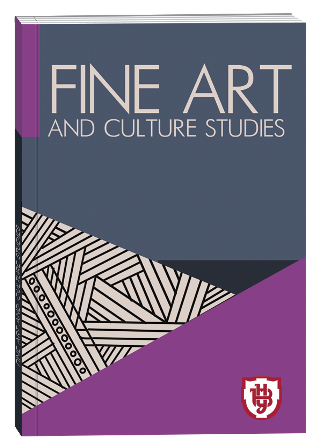MODERN ASPECTS OF VOCAL ART: FROM TRADITION TO INNOVATION
DOI:
https://doi.org/10.32782/facs-2025-1-16Keywords:
vocal art, traditions, innovations, digital technologies, vocal techniques, bel canto, overtone singing, vocal percussion, autotune, vocoder, synthetic voices, globalization, authenticity, hybrid approaches, cultural impact.Abstract
This article is devoted to a comprehensive study of the evolution of vocal art, tracing its development from traditional forms established within historical contexts to contemporary innovative practices that are actively reshaping this art form in the 21st century. The primary aim of the research is to conduct a thorough analysis of the key trends in vocal performance, influenced both by centuries-old traditions and by the advent of cutting-edge technological advancements that are redefining the creation and perception of vocal music. The study employs a historical-analytical approach to explore the stages of vocal art’s development, a comparative analysis to juxtapose traditional and modern vocal techniques, and a synthesis of data drawn from an extensive range of scholarly sources, encompassing works by Ukrainian and international researchers. The main findings reveal that digital technologies—such as voice processing tools like autotune, vocoders, and software such as Vocaloid—significantly enhance performers’ creative potential, enabling the production of novel sound textures and synthetic voices while maintaining connections to traditional forms, including bel canto and ethnic vocal practices. The conclusions highlight the promising nature of hybrid approaches that effectively integrate the authenticity of vocal traditions with modern innovations, emphasizing the need for further investigation into their cultural significance amid globalization. This research underscores the critical importance of understanding these transformations to grasp the future trajectory of vocal art, its role in shaping new aesthetic paradigms, and its contribution to preserving cultural heritage in an era marked by rapid technological progress.
References
Бойко О. Історія вокального мистецтва: від Античності до сучасності. Київ: НМАУ, 2018. 320 с.
Гринишин М. Вокальна педагогіка: традиції та інновації. Львів: ЛНУ, 2020. 198 с.
Шевчук О. Українська музична культура: від традицій до сучасності. Київ: Видавництво «Музична Україна», 2019. 276 с.
Burrows D. The Cambridge Companion to the History of Opera. Cambridge: Cambridge University Press, 2019. 408 p.
Celletti R. A History of Bel Canto. Oxford: Clarendon Press, 1991. 218 p.
Sadie S. The New Grove Dictionary of Music and Musicians. London: Macmillan Publishers, 2001. Vol. 25.
Levin T. Where Rivers and Mountains Sing: Sound, Music, and Nomadism in Tuva. Bloomington: Indiana University Press, 2006. 304 p.
Miller R. The Art of Singing: Discovering and Developing Your True Voice. New York: Applause, 2008. 256 p.
Katz M. Capturing Sound: How Technology Has Changed Music. Berkeley: University of California Press, 2010. 336 p.
Cook N. Music: A Very Short Introduction. Oxford: Oxford University Press, 2021. 168 p.
Stark J. Bel Canto: A Theoretical and Practical Vocal Method. New York: Dover Publications, 2003. 224 p.
Kenmochi H. Vocaloid and Hatsune Miku Phenomenon in Japan. Tokyo: Yamaha Music Media, 2012. 180 p.
Potter J. Vocal Authority: Singing Style and Ideology. Cambridge: Cambridge University Press, 1998. 235 p.







